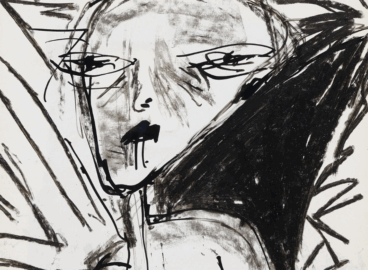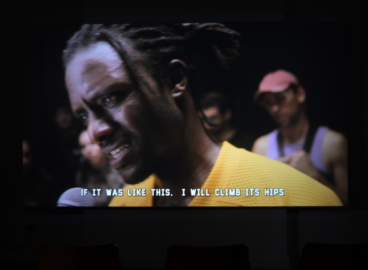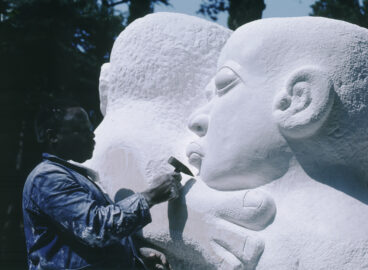Geta Brătescu, whose career began in the 1960s and continues until today, is a pivotal figure in the history of post-war Romanian art. Working under the repressive political regime of Nicolae Ceauşescu for a large part of her career, Brătescu, developed a body of work that reflects the conditions of its production. Largely (though not wholly) isolated from the predominant dialogues shaping artistic practice in Western Europe and beyond, Brătescu and others of her generation worked with materials that were on hand to create a conceptually driven art in a range of mediums. My friend is the failure and glory of my generation, of those who might be called ‘post-war cavaliers’ ”, she wrote in 1985, “Cavaliers—albeit impure ones—of the gratuitous gesture. The gates closed too soon; we were cut off by Time. Time races on; we can’t catch it! But nonetheless, the larder of our hut is full of gold.”
First and foremost, the artist’s studio figures prominently into her work. In film and photographs this private space, used by Brătescu, for living and for working, becomes the stage for and subject of her investigations; she explores its physical parameters and the actions unfolding within. Though she eschews identification with Feminism, her work, particularly her performance-based practice, Medea drawings, and various self-portraits, exists within a larger historical nexus of progressive art that challenges dominant political and social ideology. “If I am a feminist,” she has said, “it is through obstinacy. This means I wink at whatever happens.” Brătescu, draws inspiration from the tradition of slapstick and especially the early films of Charlie Chaplin. Her art is infused with an unexpected humor and levity that further complicates and enriches our experience of it.
In recent years, there has been a surge of interest in Bratescu’s work which had been largely unknown but to select audiences. It is invigorating to witness, though there remains much to be done. The research on the artist’s oeuvre presented here in the form of portfolio was initiated on the occasion of C-MAP group trip to Romania in May 2012.
Enlarge an image to read a detailed description of each work.


